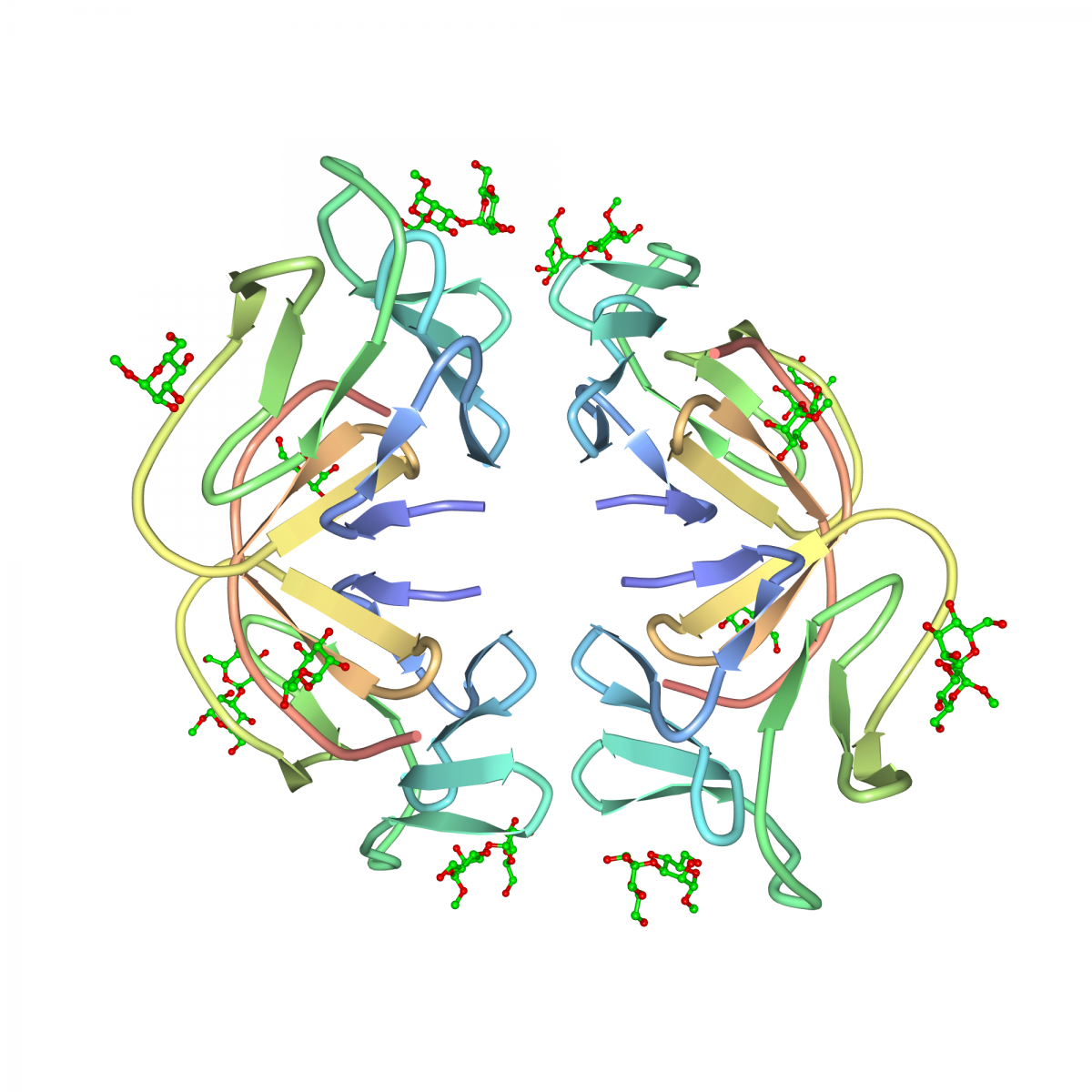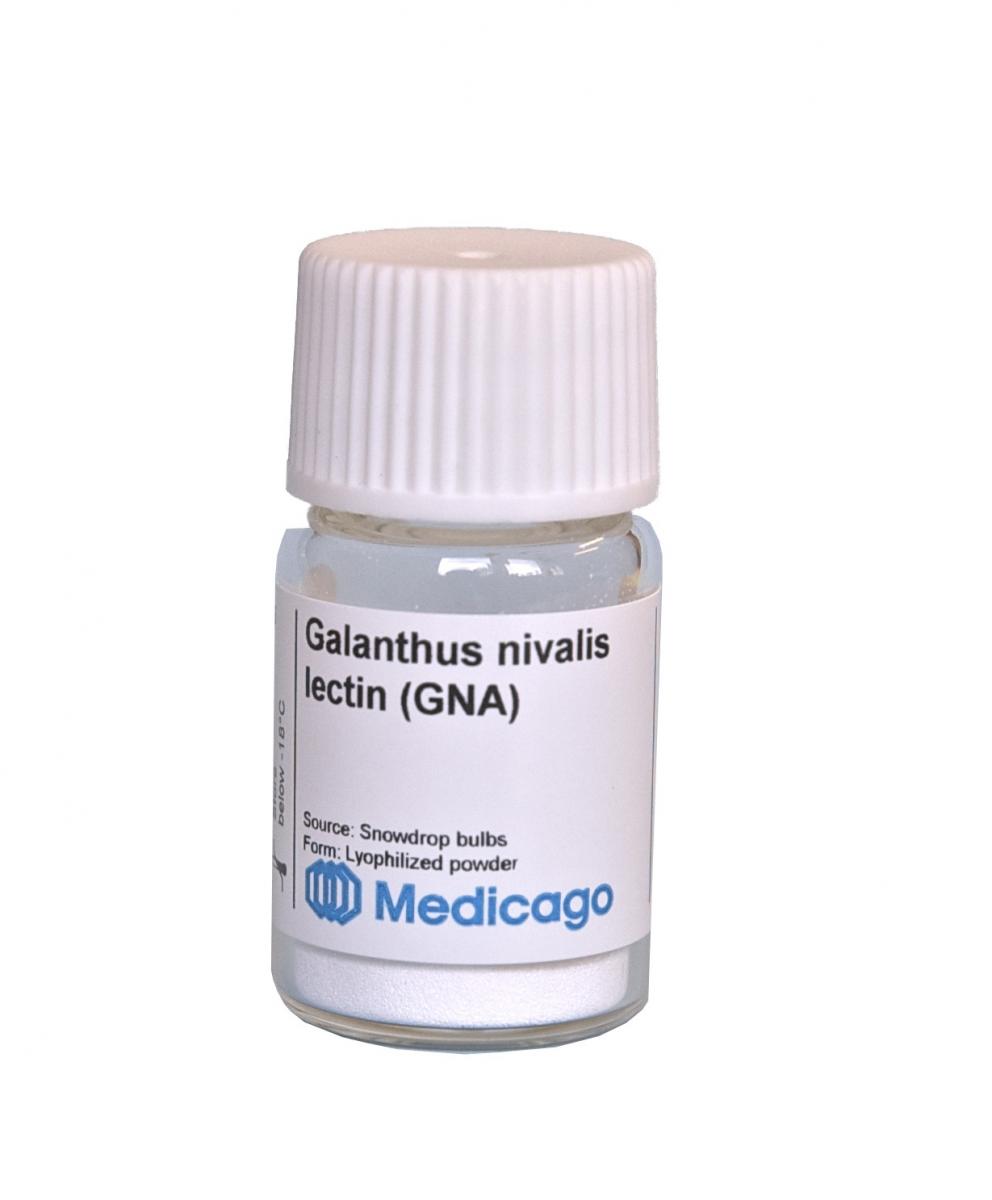Absolute Lectins
Galanthus nivalis lectin (GNA)
*** For pack size 1 g or more, please contact us to inquire about pricing
Features
- Ultrapure quality
- Agglutinates rabbit erythrocytes
- Sugar specificity: (α-1,3) mannose residues
- Binds to serum IgM and α2- macroglobulin
- Lyophilized powder
Product description
Galanthus nivalis lectin or agglutinin (GNA) is isolated from snowdrop bulbs. Is has a molecular weight of 50 kDa and consists of four identical subunits (1). The lectin is known to agglutinate rabbit erythrocytes but not human erythrocytes (1). It binds specifically to murine IgM immunoglobulin and human α2-macroglobulin. Structures containing (α-1,3) mannose residues are preferred for binding (2). It contains little or no carbohydrate and does not need Ca2+ or Mn2+ for binding, since unlike most mannose-specific lectins it is not a metalloprotein. Unlike the majority of mannose-binding lectins, GNA does not bind alpha-linked glucose. GNA has been useful in HIV research (3). It is also applicable for blood cell agglutination studies but also as a model system to help understand the molecular basis of how proteins recognize carbohydrates.
Medicago’s GNA lectin is supplied as a white to cream coloured lyophilized powder. The purity of GNA lectin is determined by SDS- electrophoresis, which generates one single band at 13 kDa corresponding to the four identical polypeptide chains. The lectin is available in vials containing 5 mg powder and is to be used for laboratory work only.
Applications
- Blood cell agglutination studies
- Model systems to help understand the molecular basis of how proteins recognize carbohydrates
- HIV research
Directions for use
The lectin may be reconstituted with 2 ml of deionized water before use. Spin the vial gently until full dissolution. Aggregation is thought to occur in the presence of high concentrations of 2-mercaptoethanol. The solution may be reconstituted in this buffer to desired working concentration. In absence of lactose the lectin will polymerize and storage at pH 8.6–8.8 causes precipitation.
Shipping and storage
The product is shipped at -20°C however for over-the-day transport it may be shipped at ambient temperature. The lyophilized powder is stable for more than five years from production date when stored below -20°C. After reconstitution with deionized water, the solution may be stored frozen in working aliquots for up to 12 months.

References
(1) Naoto Shibuya, Irwin J. Goldstein, Els J. M. Van Damme and Willy J. Peumans. (1988) Binding Properties of a Mannose-specific Lectin from the Snowdrop (Galanthus nivalis) Bulb* J. Mol. Biol. Vol. 263, No. 2, Issue of January 15, pp. 728-734
(2) Christine S. Wright, Hanae Kaku and Irwin J. Goldstein (1990). Crystallization and Preliminary X-ray Diffraction Results of Snowdrop (Galanthus nivalis) Lectin. J.Mol.Biol. Vol. 265, No. 3, Issue of January 25, pp. 1676-1677
(3) Gilljam, G. AIDS Reserach and Human Retroviruses. May 1993; 9(5): 431–8.
(4) The mannose-specific bulb lectin from Galanthus nivalis (snowdrop) binds mono- and dimannosides at distinct sites. Structure analysis of refined complexes at 2.3 A and 3.0 A resolution. Hester, G., Wright, C.S. (1996) J.Mol.Biol. 262: 516–31.

